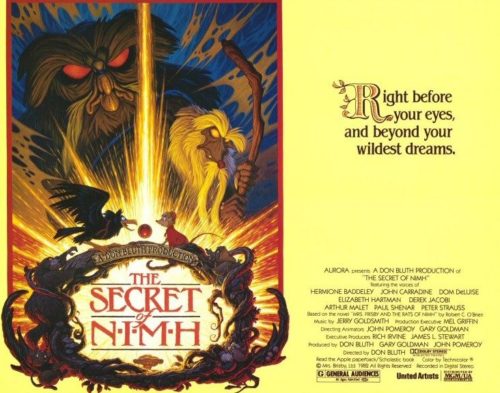
Not Quite Horror contains reviews of films not traditionally considered horror films. By analyzing them as horror films (identifying the monster, discussing the shared worry for the audience and the main characters, and understanding the depth of horror available to the viewer), who knows? There’s more than one way to watch a movie.
The Secret of NIMH (1982)
The Monster: The rats in The Secret of NIMH are of the usual size, but possess unusual intelligence. They escaped from a mental health institute and founded a society in a farmer’s field.
When the farmer plans to plow over their home (and the home of a friendly family of mice), the nastier rats begin to show their true colors.
The Horror: Lead villain Jenner slavers and snarls his way off of the animated screen and into the nightmares of children and adults alike. His character art begins with a restrained ferocity and ends in complete animal rage.
In addition to this, Jenner is a rat. Rats and mice upset a large percentage of the population, and with good reason. They have signified death and disease for centuries.
The Shared Fate: Despite magical colors and a character voiced by Dom DeLuise, life in The Secret of NIMH is realistic and brutal. Characters betray and murder each other. A small (mouse) child may die if his mother doesn’t get him medication and a better place to live. The rats are bigger and smarter than you, and they’re starting to get ideas.
This film might inspire a vague sense of dread in children, as it hints at an adult world where the rats are human and the stakes are just as high.
In other words: Good luck, get the medicine, dodge the claws, and protect your home while you can.
— I am indebted to Noel Carroll’s The Philosophy of Horror for his ideas on defining horror, as well as John Skipp and Craig Spector’s article “Death’s Rich Pageantry, or Skipp & Spector’s Handy-Dandy Splatterpunk Guide to the Horrors of Non-horror Film†in Cut! Horror Writers on Horror Film for a similar idea.–
–Axel Kohagen
